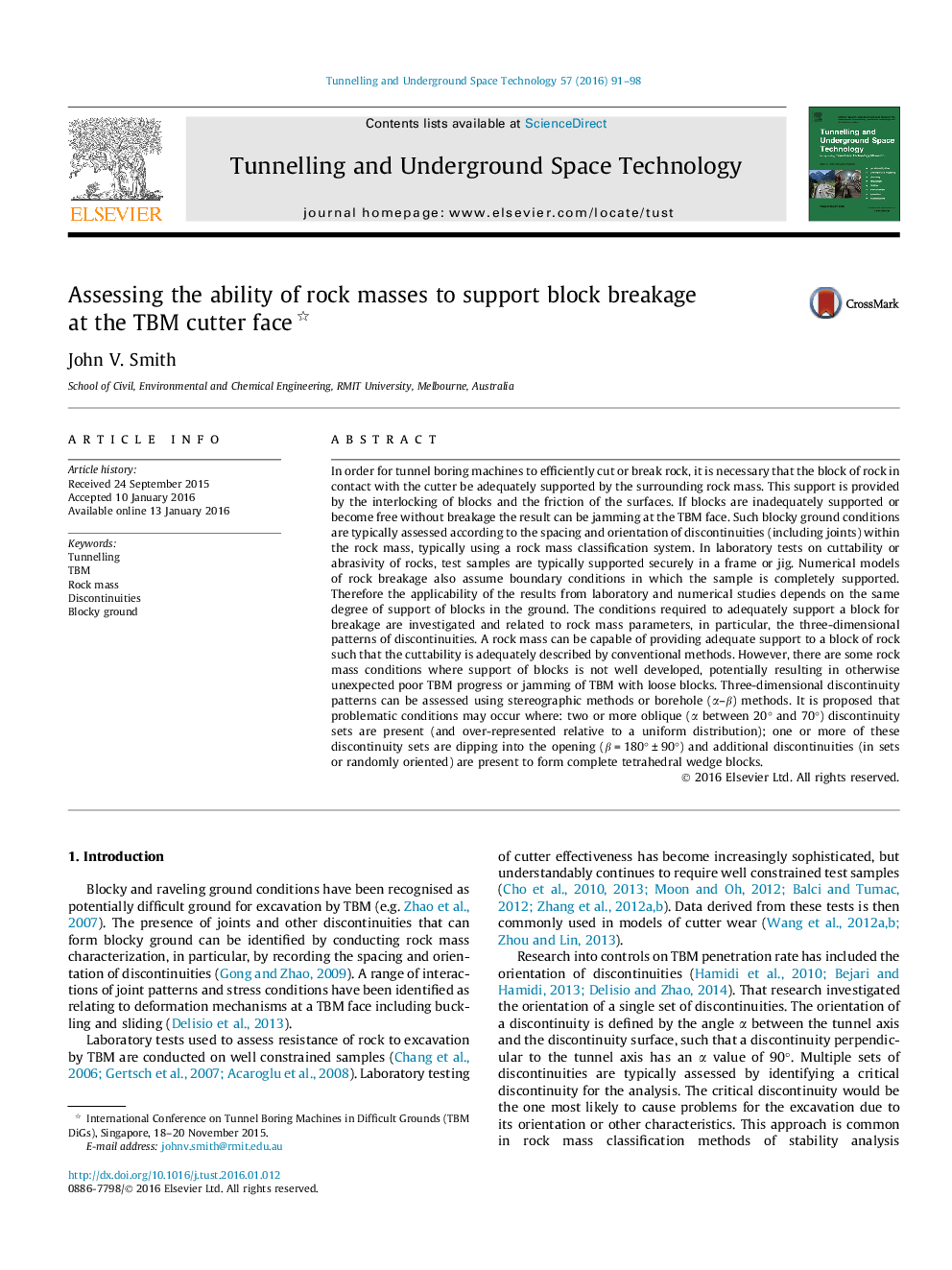| Article ID | Journal | Published Year | Pages | File Type |
|---|---|---|---|---|
| 310588 | Tunnelling and Underground Space Technology | 2016 | 8 Pages |
In order for tunnel boring machines to efficiently cut or break rock, it is necessary that the block of rock in contact with the cutter be adequately supported by the surrounding rock mass. This support is provided by the interlocking of blocks and the friction of the surfaces. If blocks are inadequately supported or become free without breakage the result can be jamming at the TBM face. Such blocky ground conditions are typically assessed according to the spacing and orientation of discontinuities (including joints) within the rock mass, typically using a rock mass classification system. In laboratory tests on cuttability or abrasivity of rocks, test samples are typically supported securely in a frame or jig. Numerical models of rock breakage also assume boundary conditions in which the sample is completely supported. Therefore the applicability of the results from laboratory and numerical studies depends on the same degree of support of blocks in the ground. The conditions required to adequately support a block for breakage are investigated and related to rock mass parameters, in particular, the three-dimensional patterns of discontinuities. A rock mass can be capable of providing adequate support to a block of rock such that the cuttability is adequately described by conventional methods. However, there are some rock mass conditions where support of blocks is not well developed, potentially resulting in otherwise unexpected poor TBM progress or jamming of TBM with loose blocks. Three-dimensional discontinuity patterns can be assessed using stereographic methods or borehole (α–β) methods. It is proposed that problematic conditions may occur where: two or more oblique (α between 20° and 70°) discontinuity sets are present (and over-represented relative to a uniform distribution); one or more of these discontinuity sets are dipping into the opening (β = 180° ± 90°) and additional discontinuities (in sets or randomly oriented) are present to form complete tetrahedral wedge blocks.
